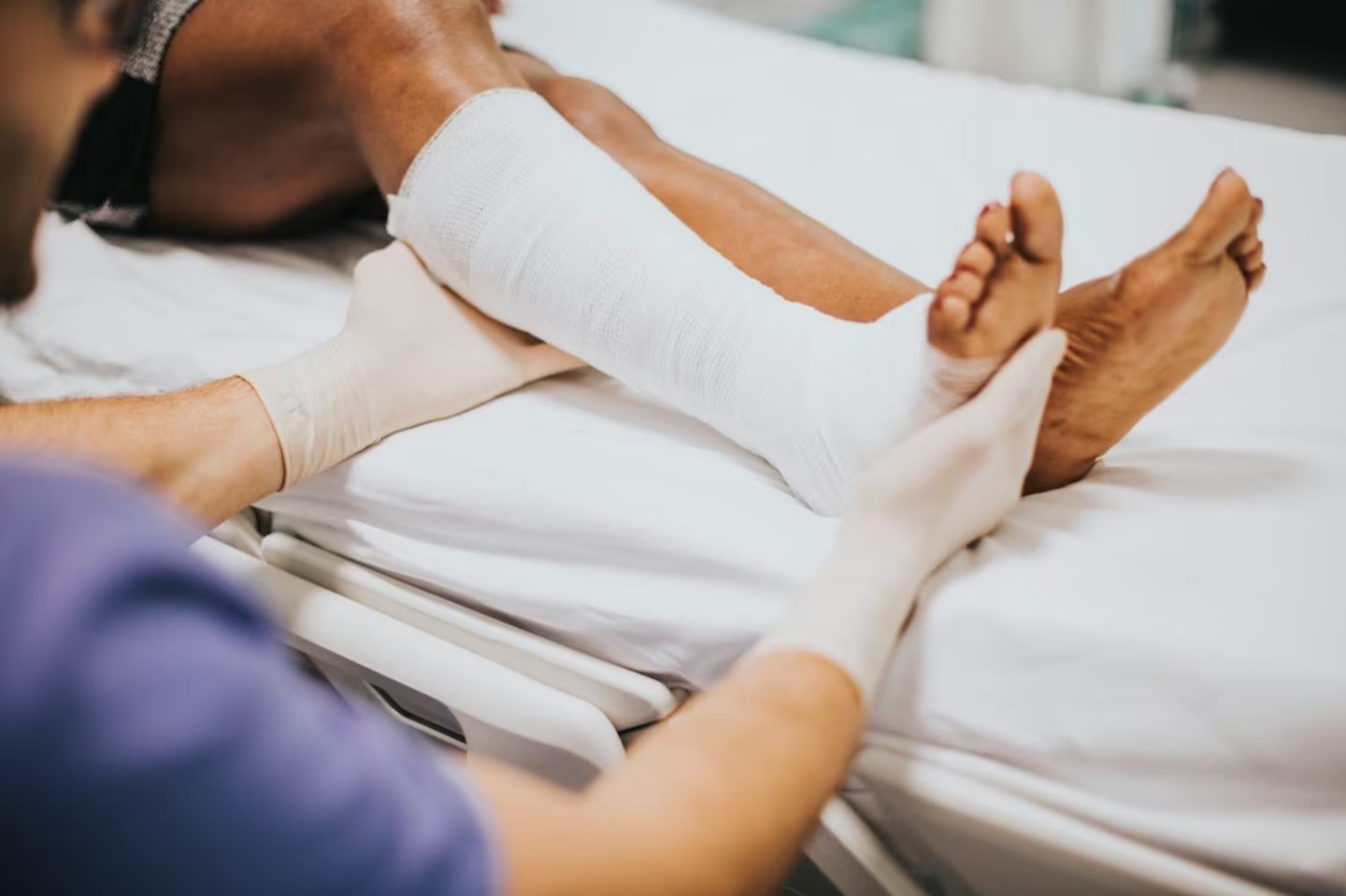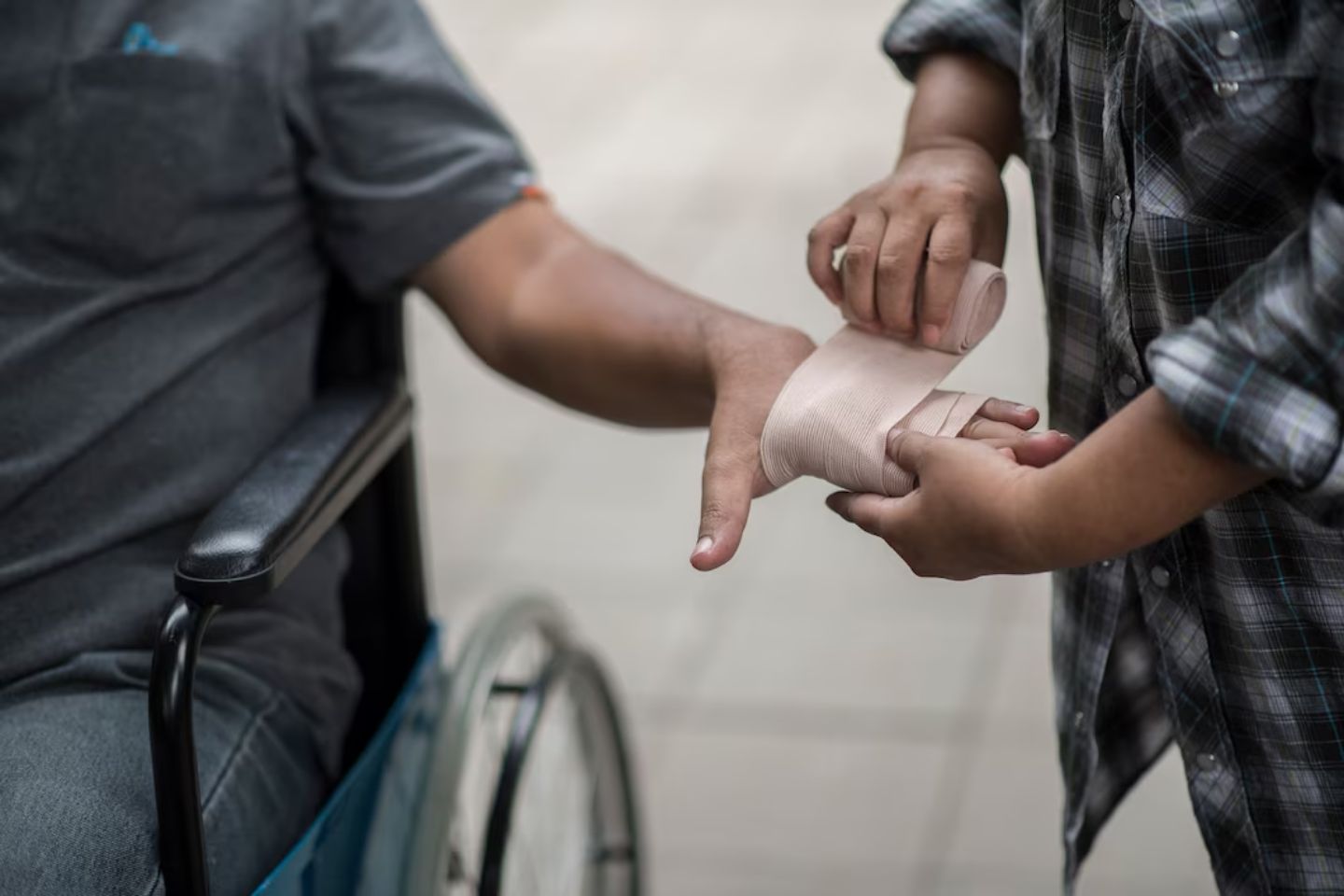Despite improvements in car and road safety legislation, motor vehicle crashes remain a notable public health concern on US roadways.
There were 46,980 fatalities recorded from auto accidents in 2021, with 5.4 million medically consulted injuries. The National Safety Council (NSC) says the estimated total cost of these motor vehicle injuries amounted to $498.3 billion.
Numerous factors contribute to car crashes on the road. While they can occur at any time and place, congested traffic can increase the frequency and severity of car accidents and the resulting injuries. Congestion can be particularly dangerous when drivers rush to reach their destinations.
The increasing number of cars and other motor vehicles contributes to congested traffic conditions. It’s worth noting that approximately 286 million vehicles were operating on US roads in the first quarter of 2023. These circumstances make preventing collisions and car crash injuries more critical than ever.
This article delves into the factors that increase the likelihood of car accident injuries and offers essential tips to prevent them. We also explore the crucial steps you should take if you sustain an injury after getting involved in a car crash.
Key Takeaways
|
Overview of the Most Common Injuries Sustained in Car Accidents
Learning about the most common car accident injuries gives you insights into what to expect from a car collision.
Like other causes of accidents, car crash injuries differ widely based on the specific circumstances of each collision. However, certain types of injuries are more frequent in car crashes.
Accident victims can sustain different kinds of car crash injuries. Generally, these injuries fall into two main categories: impact injuries and penetrating injuries.
Impact injuries typically occur when a person’s body part strikes any component of the car’s interior. A typical example is hitting your head on the side window or your knee colliding with the dashboard.
Meanwhile, penetrating injuries happen when loose or sharp objects inside the vehicle pierce the individual’s skin, resulting in open wounds. A common example of this is having your legs impaled by shards of glass due to the collision.
Both types of car crash injuries can range from minor, resolving within days without medical treatment, to more serious injuries that could lead to varying degrees of permanent physical disability.
Regardless, the following is an overview of the injuries commonly sustained in accidents involving cars and other motor vehicles.
Soft tissue injuries
The human body comprises many soft tissues, such as muscles, ligaments, and tendons. The impact of car collisions can cause damage to these soft tissues.
Soft tissue injuries can take various forms throughout the body. However, car accidents often result in soft tissue injuries in the neck, shoulder, and chest. Sprains, strains, bruises, and lacerations are common injuries to soft tissues after a car crash.
Back and neck injuries
The whipping motion of car accidents can cause mild to severe injuries to the back and neck.
Back injuries from car accidents can damage the bones or soft tissues in the spine. But they don’t typically affect the spinal cord. Common examples of these are spinal fractures, herniated discs, and back sprains and strains.
The most severe back injuries may involve the spinal cord. A spinal cord injury refers to specific damage to the spinal cord or nerves that results in loss of function or mobility in various parts of the body. Depending on the injury’s severity, it may cause total or partial paralysis.
Neck injuries suffered in auto accidents can also vary in type and severity. Whiplash is the most commonly occurring neck injury in car crashes. It may result in chronic back pain, stiffness, and weakness in the neck and upper shoulder.
Chest injuries
A car collision can cause injuries to the chest in numerous ways. The impact of car collisions can stretch the muscle tissue in your chest, resulting in painful tears. It often happens when you collide with the steering wheel and dashboard.
Chest injuries from car accidents can range from minor bruises to serious conditions like broken ribs and internal bleeding. Injuries to the chest may cause damage to the internal organs, including the kidneys and spleen. These internal injuries can be life-threatening when left undetected and untreated.
Head injuries
Car collisions can result in a variety of head injuries, affecting the skull, brain, and underlying tissue. The physical impact of a car wreck can cause trauma to the head, resulting in these injuries without experiencing any direct contact.
Injuries to the head can vary from a mild bruise to a life-threatening traumatic brain injury (TBI) and brain damage. In a car accident, two primary types of head injuries can lead to a TBI, namely:
- Closed head injuries happen when the head receives a hard blow from striking an object. Since it doesn’t break or penetrate the skull, there may be only minor surface cuts, scratches, and no bleeding.
- Open head injuries occur when the skull breaks due to direct contact with a sharp object, glass, or metal. They may also involve an open wound and bleeding that needs to be treated promptly.
Factors That Increase the Risk of Car Accident Injuries

Awareness of the factors that increase the risk of car accident injuries can be beneficial. It can help you take preventive measures and make better-informed decisions while driving.
Below, we’ll walk you through the significant contributing factors to car crash injuries and how they affect the injury’s frequency and severity.
Traffic congestion
Frustration levels quickly rise when stuck in congested traffic. This often causes drivers to engage in road rage and aggressive driving. Despite taking all the necessary precautions, other motorists may allow their emotions to overwhelm them and take actions that result in an accident and injury.
Moreover, the likelihood of getting involved in a car accident and sustaining an injury increases during traffic congestion as more cars travel at irregular speeds on the road. Shorter following distances and frequent stop-and-go patterns in congested traffic can also result in rear-end collisions.
Dangerous driving habits
Engaging in dangerous driving habits often leads to disastrous consequences on the road. Unfortunately, many drivers operate their vehicles while drunk, distracted, or tired.
As a direct result, they can lose control of their car and cause a traffic collision. For instance, driving at a high speed on a heavily congested road or failing to yield heightens the risk of getting injured in a side-impact crash.
Poor weather conditions
Poor weather conditions are another contributing factor to car accidents. Heavy snow, rain, and fog reduce visibility, potentially disorienting a driver. It may also cause them to miss certain hazards that contribute to a collision. Additionally, slick and slippery roads during inclement weather can lead motorists to lose control of their vehicles and get injured.
Neglected vehicle maintenance
Poor vehicle maintenance is another factor that contributes to car crashes. When drivers fail to maintain their cars, it may result in undetected issues that can reduce a driver’s control over the vehicle and cause an accident. For instance, a cracked windshield can obstruct a motorist’s vision. Brakes can also fail suddenly, resulting in a rollover or side-swipe collision.
Essential Tips To Help You Avoid Car Crash Injuries
You are at risk of getting involved in an auto accident whenever you get behind the wheel. Although you cannot prevent other drivers from making poor decisions while operating their vehicles, you can work on your driving habits.
Several measures are available to minimize your risk of being injured in an accident. Consider the following tips for avoiding car crash injuries:
Follow safe driving practices
Driving comes with significant responsibilities. As a driver, you have a legal duty to operate your vehicle safely and reasonably protect other road users by adhering to traffic laws.
You can be held legally liable when you breach this duty of care and cause injury or property damage. To prevent getting injured in a car accident and protect yourself against personal injury liability, follow these safe driving practices:
- Maintain a safe following distance
- Adhere to the posted speed limits
- Disregard distractions while driving
- Obey traffic signals and signs
- Watch out for blind spots
Properly utilize car safety measures
Car safety measures are specifically designed to protect drivers and passengers. However, properly utilizing this equipment is essential to securing a safer and more responsible driving experience. When effectively using crash protection features, here are a few tips you should keep in mind to mitigate the risk of collisions and resulting injuries:
- Wear seat belts properly. Position your shoulder belt securely across your rib cage in the middle of your chest.
- Adjust your headrest’s position. Ensure it’s at least level with the top of your head.
- Set the steering wheel correctly. Maintain an optimal distance of 10 inches from it.
Exercise more caution in inclement weather
Inclement weather makes safe driving more challenging. It’s advisable to postpone a trip instead of driving in extreme weather conditions. But if you must venture outside, exercise greater caution in inclement weather by considering these steps:
- Drive slower than the posted limit or decrease your speed by one-third.
- Keep your headlights on to make you more visible to other drivers.
- Avoid unnecessary lane changes to maintain better visibility and control of the vehicle.
- Prevent errors at intersections by staying alert to potential road hazards.
- Increase your vehicle’s following distance by as much as 10 seconds.
Perform regular car maintenance
Regular car maintenance minimizes the risk of mechanical failure while driving. It helps ensure that you have safe and dependable transportation.
The vehicle has many different mechanical parts. However, specific components require more attention than others to maintain the vehicle in top-running condition. Prioritizing the following car maintenance can help you avoid sustaining car accident injuries:
- Maintain your vehicle’s braking system by checking brake pads and flushing brake fluid.
- Replace your car’s tires periodically, or around every 3 to 6 years under regular use.
- Clean and restore headlights or taillights at least every 6 to 12 months.
Crucial Steps To Take if You Sustain a Car Crash Injury


Not all motor vehicle accidents are preventable. Suppose you or a loved one sustains an injury in a car crash. In that case, preserving evidence of the accident is crucial for holding the negligent driver liable for the car crash injuries and resulting losses.
If you get injured in a car crash, taking the following steps can aid in protecting your health and your rights to compensation.
Seek prompt and appropriate medical attention
Seeking prompt and appropriate medical attention is essential for your health and potential legal claims.
Due to the adrenaline rush after a car accident, your body’s pain threshold increases significantly, so it’s typical not to feel any pain after a car accident. As a result, accident victims tend to underestimate their injuries.
However, a thorough examination by a healthcare professional can detect hidden injuries that may require immediate medical treatment. Delaying medical care, even for a short period, can result in long-term complications from some injuries.
Likewise, obtaining medical care later rather than sooner can affect your
Report and document the motor vehicle accident
Car accident reporting differs by jurisdiction. In some states, individuals involved in accidents are legally required to report them to law enforcement. Police reports can be valuable evidence, providing an objective view of various aspects of the car collision.
Documenting the crash scene, your injuries, and the vehicle’s condition is also beneficial. Videos and photos will help determine how the crash happened and who is at fault. Remember that the burden of proving liability for the car accident rests on you.
Consult a competent personal injury lawyer
Navigating the legal aspects of your car crash injury can be daunting. Besides determining liability, it requires proving your injuries and losses to get the compensation you’re legally entitled to recover.
A competent personal injury lawyer can thoroughly investigate the facts of the crash and collect the proof essential to building your case. They will help advocate for your rights and ensure maximum financial recovery for your medical expenses and other losses.
You may hesitate to consult an attorney because of their fees and other legal costs. However, most law firms offer free consultations and work on car accident cases under a contingency fee arrangement. Instead of charging you upfront, these lawyers will only get paid if you win your case.
| Did you know? Vehicle occupants who don’t use seatbelts have a higher risk of experiencing fatal injuries in a motor vehicle crash. In 2021, 15,328 individuals were fatally injured in frontal impact crashes. Among them, only 44 percent were wearing seatbelts. |
Connect With a Lawyer After Sustaining a Car Crash Injury
Responsible driving is crucial for minimizing the risks of car crashes and potential injuries. However, some car accident risk factors are beyond your control. Considering this, it’s wise to prepare for the possibility of getting involved in an auto accident.
Car crash injuries can have long-term effects and can significantly disrupt your life. Fortunately, you can speed up your recovery with a car accident lawyer’s assistance.
Contact The Personal Injury Center now and connect with an attorney who can help you get the compensation you legally deserve. We offer a free evaluation of your case and assist you in searching for a local personal injury lawyer who best suits your legal needs.
Injured in a car crash? Obtain legal assistance through The Personal Injury Center.
Disclaimer: This article is for informational purposes. It should not be taken as medical or legal advice. Always consult with a qualified professional for any health or legal concerns.
FAQs on Avoiding Car Crash Injuries
What delayed injury symptoms typically occur after a car crash?
Some car accident injuries are evident right after the crash, but others may not manifest immediately and could take days or weeks to notice. Here are the common delayed injury symptoms to watch out for after getting involved in a car accident:
- Recurring headaches
- Nausea and blurry vision
- Neck and back pain
- Abdominal pain
- Numbness or tingling sensations
- Memory or concentration problems
How long does recovering from car crash injuries usually take?
The time required to recover after sustaining a car crash injury depends on various factors. For minor car accident injuries like whiplash and bruising, recovery typically takes six to eight weeks. More severe injuries may take several months to heal or require ongoing care for years.
Does the risk of personal injury increase in specific car crash types?
Compared with a single-vehicle accident, the risk of personal injury can be higher in rollover car crashes as they involve a car overturning onto its side. The impact can result in more severe injuries, including fatalities.



